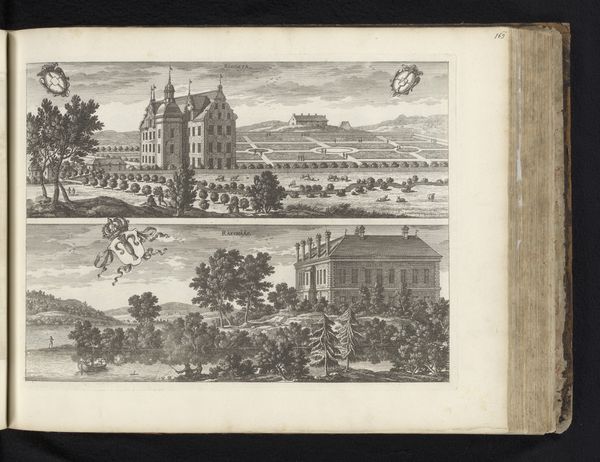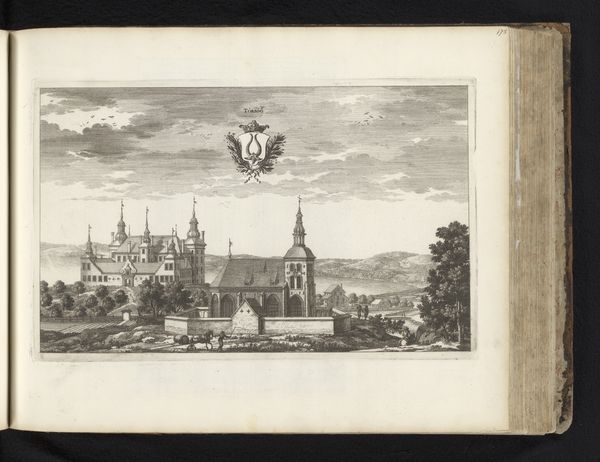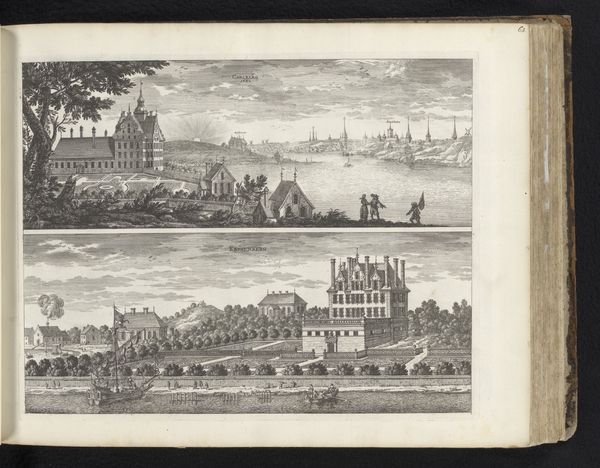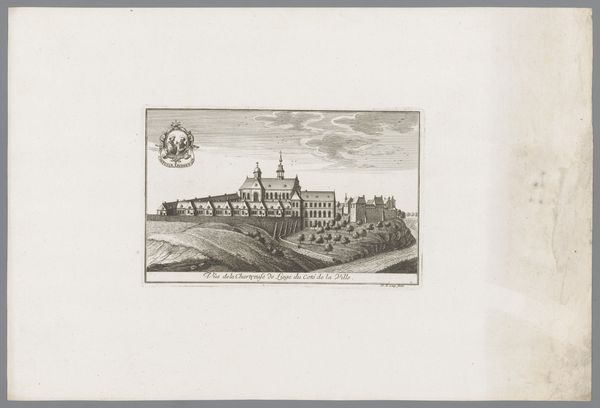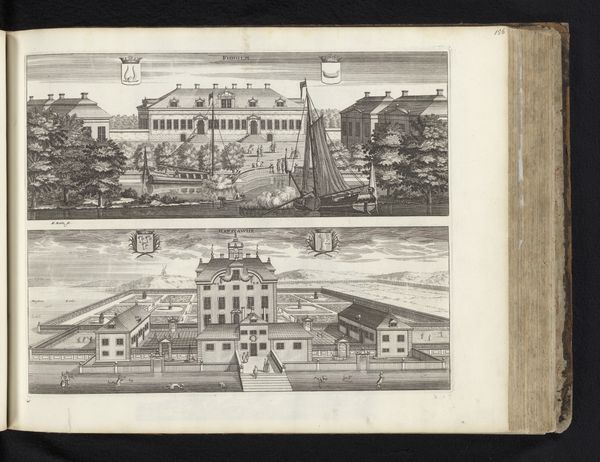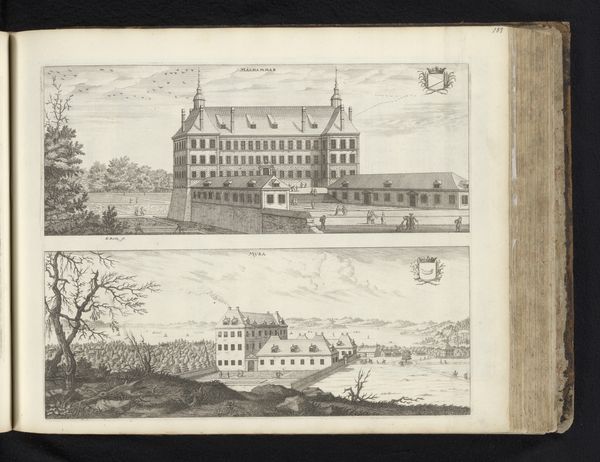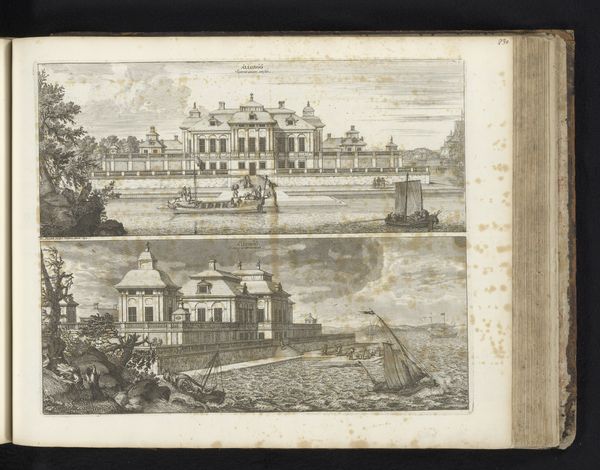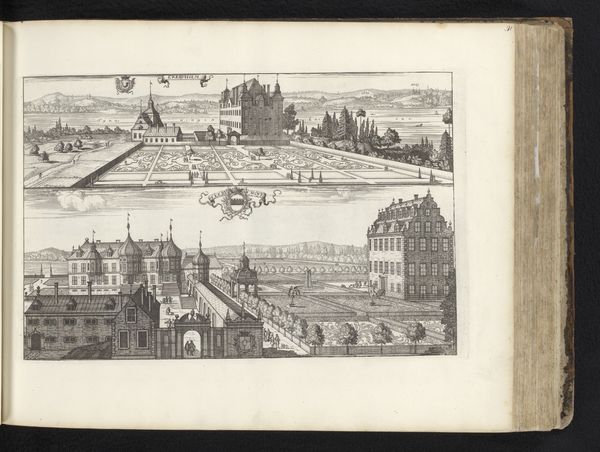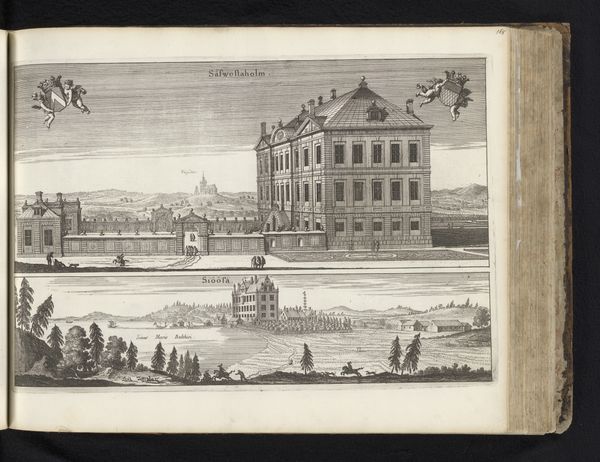
engraving
#
baroque
#
landscape
#
line
#
cityscape
#
engraving
Dimensions: height 276 mm, width 341 mm
Copyright: Rijks Museum: Open Domain
Adam Perelle made this print of Ängsö castle and Aspnäs manor, using etching and engraving, sometime in the late 17th century. These techniques involve covering a metal plate with a waxy ground, then drawing through it with a needle to expose the metal. Acid is then applied, biting into the metal to create recessed lines. Ink is applied to these grooves, and the image is transferred to paper under high pressure. The linear quality we see here is intrinsic to the process, and the close looking it encourages is appropriate to the subject. Both Ängsö and Aspnäs are presented with meticulous detail. Notice the regimented rows of windows, the careful articulation of the landscaping. This is not just a picture, but a representation of status and power. Prints like these circulated widely, creating demand for precisely this kind of architecture. The very process of etching and engraving was thus complicit with the ambitions of the elite: the desire for control, and the projection of authority through the built environment. By understanding the means of production, we can consider the social context of this image, and its participation in a system of labor, class, and consumption.
Comments
No comments
Be the first to comment and join the conversation on the ultimate creative platform.
